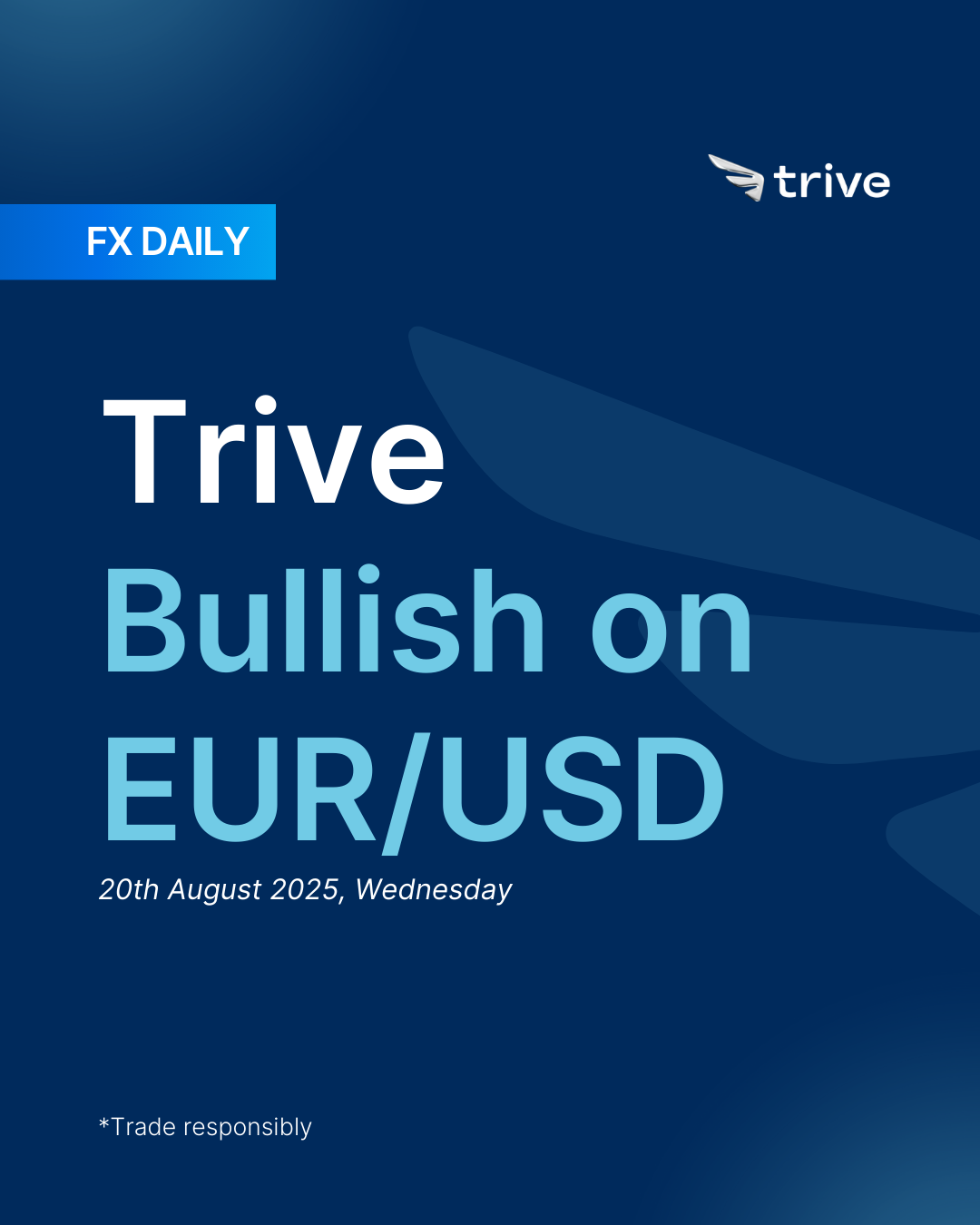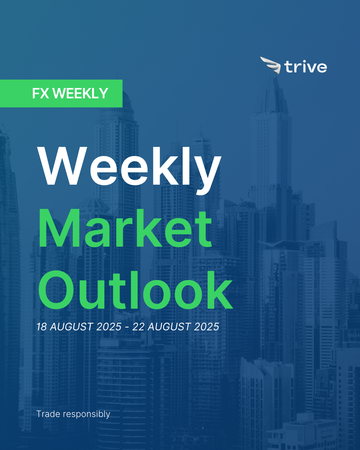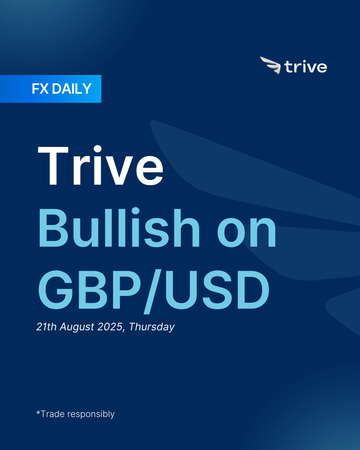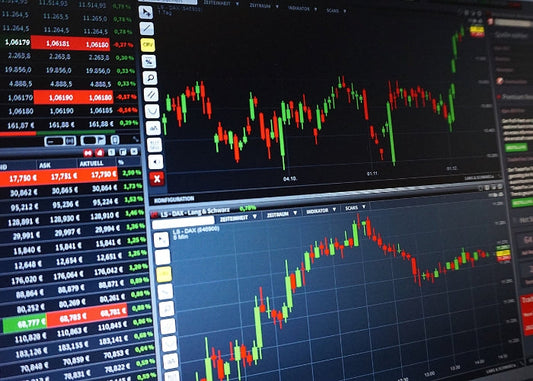FX Daily: Trive Bullish on EUR/USD

The Euro traded as a passenger to USD swings, rallying on softer US CPI but reversing after hotter PPI. With Eurozone data weak and ECB steady, direction remains tied to Fed expectations and geopolitics. Markets price only ~33bps of ECB cuts vs ~74bps for the Fed, keeping rate differentials supportive for EUR. Near-term catalysts are the upcoming Eurozone PMIs/CPI. While upside remains fragile, a softer USD and signs of easing geopolitical risks should allow EUR/USD to grind higher, keeping our bias bullish.
EUR: Remain attractive
The Euro spent the week as a passive spectator, with its movements almost entirely dictated by the swings in the US Dollar and changing expectations for Fed policy. With little on the domestic economic calendar, the single currency followed the broader market narrative. EUR/USD began the week under pressure, slipping below 1.1600 as the dollar regained strength. Mid-week, the pair rallied strongly to a monthly high near 1.1730 after US CPI data reinforced expectations for a September Fed rate cut and weakened the dollar. This move was short-lived, as Thursday’s hotter-than-expected US PPI print reversed the momentum and drove EUR/USD back down, finding support just above 1.1600. The Euro ended the week off its lows but firmly range-bound, lacking independent drivers and with its near-term direction tied to the outcome of the Trump-Putin summit and the upcoming PMI data.
Eurozone data releases had little influence on trading. The German ZEW Economic Sentiment survey for August deteriorated sharply, reflecting disappointment over the EU-US trade deal, but markets ignored the result. Final July CPI readings in Germany, Spain, and France were unrevised, confirming that inflation pressures remain contained. Eurozone industrial production fell 1.3% month-on-month in June, missing expectations, and second-quarter GDP growth was confirmed at just 0.1%, underscoring the region’s sluggish momentum.
The European Central Bank narrative remained steady, with policymakers seen as patient and data-dependent. Market pricing shifted slightly during the week but ended with roughly a 50% probability of one 25bps rate cut by year-end, with easing not fully priced until 2026. Bundesbank President Nagel struck a neutral tone, saying inflation is no longer a major challenge but noting tariff uncertainty still lingers. A Reuters poll reinforced the consensus view that the ECB will hold its deposit rate at 2.00% at the next meeting.
Geopolitical factors remained an important backdrop. The Trump-Putin summit in Alaska was a key focus, with analysts suggesting that any positive outcome, particularly a ceasefire agreement, could boost the Euro given its proximity to the conflict. The aftermath of the recent EU-US trade deal also weighed on sentiment, with the German Economy Ministry warning that there are still “no signs of noticeable economic recovery,” echoing the weak ZEW survey results.
Market sentiment showed the Euro trading as a mirror image of the US Dollar Index. The rally to 1.1730 was entirely driven by dollar weakness after CPI, while the sharp reversal was caused by dollar strength following the PPI release. With no domestic catalysts, traders looked externally for direction, focusing first on the Trump-Putin meeting and then on next week’s flash PMI releases, which are expected to be the next significant test for the Euro.
As of Saturday, the markets assign a 92% probability to holding rates steady and an 8% probability to a 25-bps rate cut at the September 11th meeting. The interest rate path is higher compared to last week, and the markets are pricing in 33-bps of rate cuts over the next five meetings.
We believe the Euro is still missing a bit of bullish momentum. This past week showed that the single currency was more of a passenger than a driver, reacting almost entirely to swings in the US Dollar rather than finding strength of its own. The rally after the softer US CPI data reminded us that there is room for EUR/USD to push higher, but the quick reversal on the back of stronger PPI highlighted how fragile that upside move remains.
The Trump-Putin meeting and any better clarity on the path ahead in the Ukraine conflict could have longer-lasting implications for the Euro. How the Euro will trade on Monday morning will be a good gauge of how markets have digested any headlines from Alaska. We also think that the deterioration in the Eurozone’s terms of trade has impacted the long-term Euro fair value, and some conviction that energy prices could come structurally lower from here might make markets more comfortable with the Euro trading above levels implied by its relatively unattractive rate differential – for example, above 1.20.
That said, this could be the first step in the direction of de-escalation, and markets may tread carefully for now. Looking ahead, we think next week’s Eurozone CPI and flash PMIs could be the real catalysts. Stronger numbers could finally give the Euro some independent footing and reignite EUR bulls, while weaker readings and bad news from Alaska might instead open the door to a bearish phase.
For now, our outlook remains weak bullish.
USD: Bearish
The US Dollar had a volatile week, caught between expectations of rate cuts and a sudden surge in inflation concerns. The DXY started the week under pressure, sliding towards 97.50 after July CPI data on Tuesday came in “not as bad as feared,” reinforcing market conviction for a September Fed rate cut. This dovish sentiment was amplified mid-week when Treasury Secretary Bessent suggested a larger 50bps cut, which pushed the dollar to its weekly lows. However, the narrative shifted entirely on Thursday after a shockingly hot Producer Price Index report showed both headline and core PPI surging by 0.9% month-on-month, far above forecasts. This reignited inflation fears and triggered a sharp reversal, sending the dollar back above 98.00 as traders scaled back expectations for aggressive Fed easing. The week ended with mixed data and markets on edge ahead of a key Trump-Putin summit, leaving the dollar caught between rate cut hopes and renewed inflation anxiety.
The July CPI report came in largely as expected, with headline inflation rising 0.2% month-on-month and core up 0.3%. While annual core inflation was slightly hotter at 3.1%, the report was viewed as manageable and did not derail expectations for a September rate cut, which weighed on the dollar early in the week. Thursday’s PPI report was the turning point, as both headline and core rose an astonishing 0.9% month-on-month compared to 0.2% expected, lifting the annual core rate to 3.7%. The data suggested producer costs were passing through aggressively, especially in services, fueling inflation worries. Friday brought a mix of signals, with retail sales meeting expectations at 0.5% month-on-month and the control group beating forecasts, but consumer sentiment in the University of Michigan survey fell sharply to 58.6, well below expectations. Inflation expectations in that survey jumped to 4.9% for one year and 3.9% for five years. Import prices also came in hot at 0.4% month-on-month, while jobless claims remained steady at 224k, showing the labor market is cooling but not collapsing.
Fed policy expectations shifted wildly through the week. After the CPI report, markets fully priced in a 25bps September cut and left some room for a possible 50bps move. Following the hot PPI report, the probability of a 25bps cut slipped below 100% to around 94%, and the idea of a 50bps cut was erased. By the end of the week, expectations for total cuts this year were scaled back to around 55bps. Treasury Secretary Bessent added to the swings by initially calling for a 50bps cut, which boosted dovish sentiment, but later clarified that the Fed might start with 25bps and adjust later. Several Fed officials pushed back against aggressive easing. Goolsbee noted his unease about inflation, Daly said she no longer described the labor market as “solid” and argued against a 50bps cut, and Musalem also dismissed the idea of such a large move. Speculation around the next Fed Chair added another layer, with names floated such as David Zervos, Rick Rieder, and Marc Sumerlin, all of whom have advocated for rate cuts, creating political pressure on the Fed.
Trade and geopolitical developments also shaped sentiment. The focus late in the week was on the Trump-Putin summit in Alaska, which the White House downplayed as a “feel-out meeting,” adding to uncertainty. Trade policy remained central after the hot PPI data suggested tariffs were driving inflationary pressures. Fed officials acknowledged the stagflationary risks of tariffs, and President Trump announced new tariffs on steel and chips would take effect the following week. Earlier in the week, some calm came from news that the US would extend its trade truce with China by 90 days to November 9th.
As of Saturday, the markets assign an 85% probability to a 25-bps rate cut and a 15% probability that the Fed will hold rates steady at its September 17th meeting. The interest rate path is higher compared to last week, and the markets are pricing in 74-bps of rate cuts over the next five meetings.
At the time of writing, the Trump–Putin meetings are still ongoing, and the dollar’s reaction could go either way depending on the outcome. A constructive outcome, such as signs of easing geopolitical tensions, could weigh on the dollar as investors move toward riskier assets. On the other hand, if the talks end without progress or highlight further uncertainty, safe haven currencies could strengthen as markets seek safety.
In our view, the recent NFP report was weak enough to mark a clear shift in sentiment for the US Dollar. The headline miss was significant on its own, but the large downward revisions to previous months made it even harder to ignore. It looks increasingly clear that the labor market is losing momentum faster than the Fed anticipated.
Because of that, we continue to see a September rate cut as the most likely outcome. The Fed has tried to strike a more cautious tone, Powell recently pushed back against near-term cuts, but the data simply doesn’t support that stance anymore. Markets have flipped aggressively, and nearly 60bps of easing are now priced in by year-end.
We don’t think the US economy is collapsing. Wage growth remains decent, and there’s no sign of a major demand shock. But with job creation slowing and the unemployment rate edging higher, the Fed has enough justification to ease in September, especially with geopolitical risks and tariffs adding to the pressure.
The inflation scare from the hot PPI print does pose a risk, and if markets decide to ride that narrative, the dollar could grind a bit higher. Still, we believe growth concerns and dovish Fed expectations will likely cap sustained upside. This leaves the dollar vulnerable to selling pressure once the initial inflation-driven momentum fades.
This week brings several risk events that could shape the narrative, including Tuesday’s FOMC Minutes, Thursday’s PMIs, the Jackson Hole Symposium, and Powell’s speech on Friday. We’re maintaining our bearish baseline bias on the dollar heading into these events, but if the PMIs surprise to the upside and the FOMC Minutes strike a hawkish tone, we could reconsider our outlook.

EUR/USD 4H
Disclaimer
This material is provided for informational purposes only and does not constitute financial, investment, or other advice. The opinions expressed in this material are those of the author and do not necessarily reflect the views of Trive International. No opinion contained in this material constitutes a recommendation by Trive International or its author regarding any particular investment, transaction, or investment strategy. This material should not be relied upon in making any investment decision.
The information provided does not consider the individual investment objectives, financial situation, or needs of any specific investor. Investors should seek independent financial advice tailored to their individual circumstances before making any investment decisions. Trive International shall not be liable for any loss, damage, or injury arising directly or indirectly from the use of this information or from any action or decision taken as a result of using this material.
Trive International may or may not have a financial interest in the companies or securities mentioned. The value of investments may fluctuate, and investors may not get back the amount they originally invested. Past performance is not indicative of future results.
For more information about Trive International, please visit http://trive.com/int
Additional Information
Investing involves risk, including the potential loss of principal. Diversification and asset allocation strategies do not ensure a profit or guarantee against loss. The content in this material is subject to change without notice and may become outdated or inaccurate over time. Trive International does not undertake any obligation to update the information in this material.
By accessing this material, you acknowledge and agree to the terms of this disclaimer. If you do not agree with these terms, please refrain from using this information.
No comments
Home
Trive
TriveHub





0 comments